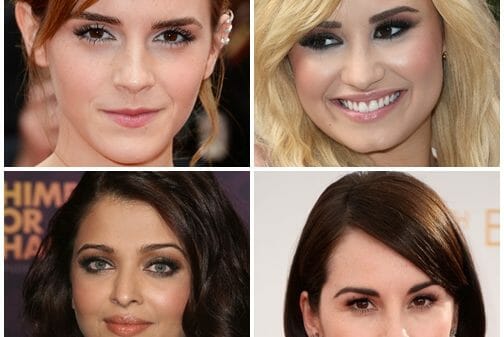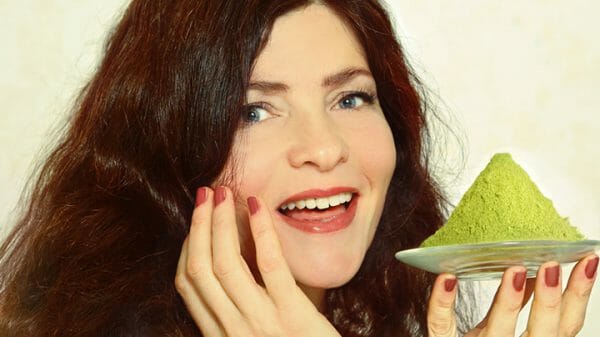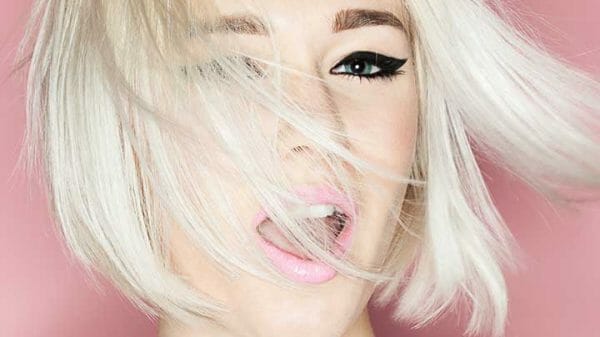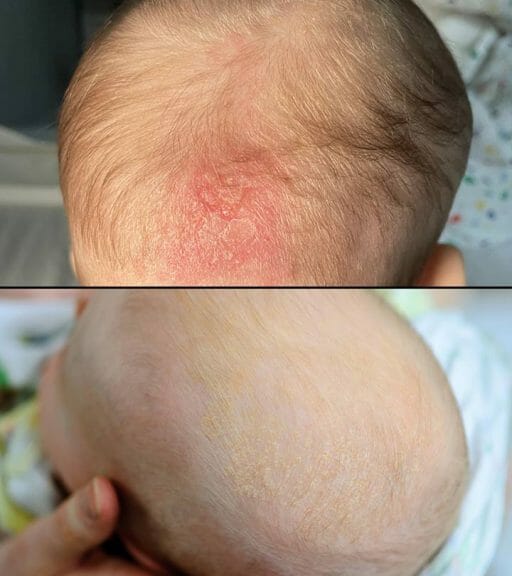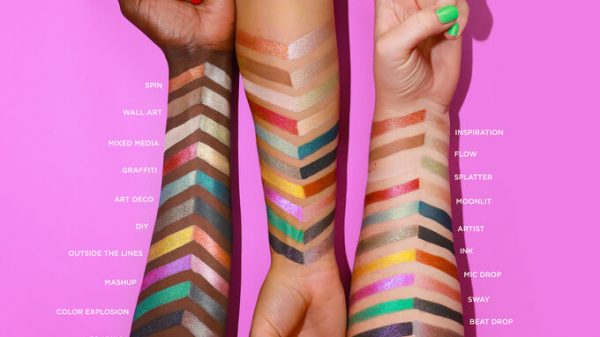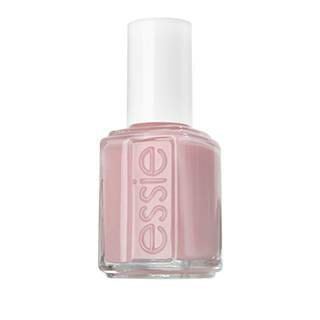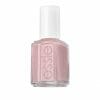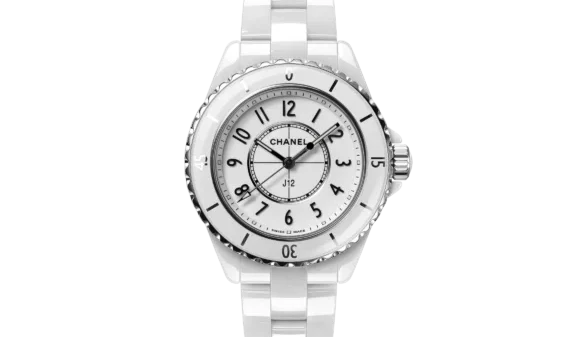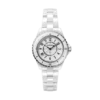Cradle Cap Vs. Dry Scalp – What Is The Difference?
Understanding the differences between the two conditions is key to getting the right treatment.
There is a difference between cradle cap and dry scalp in babies. Both may appear similar, and that is where it gets confusing. Cradle cap is caused by excess oil production, while a dry scalp is caused by dehydration. We discuss the differences between these conditions in this article to help you understand which condition your child may have. Additionally, we discuss the treatment options available. Take a look.
What Is Dry Scalp?
A dry scalp is characterized by itching and flaking. It might be a sign of pruritus (1). The child may also experience scalp scaling caused by dandruff or eczema (2).
A dry scalp is mainly caused by sebaceous activity (3). Other extrinsic factors like unbalanced sebum production, weather conditions, and improper hygiene may also cause a dry scalp.
What Is Cradle Cap?
Cradle cap, also known as pityriasis capitis, is a common and chronic non-inflammatory form of scaling that affects infants (4). It is generally noticed in the child between the third week and a few months since birth. It is characterized by greasy, yellowish flakes (scales) that affect areas with excess sebaceous gland activity. These flakes are prominent on the T-zone of the face, the ears, and the scalp.
Understanding the causes of both these conditions can help determine the best course of treatment.
Causes Of Dry Scalp
Flakes appear on the scalp mainly because of lack of sebaceous activity (3). This keeps getting washed away and, thus, the scalp creates more sebum to make up for the loss. The scalp becomes undernourished and develops flakes when there is less sebum production. A reduction in sebum production could be caused by the following factors:
- Over-washing your child’s hair/scalp
- Fungal and bacterial infections
- Excessively hot or cold temperatures
- Nutrient deficiencies
- Infrequent oiling of the child’s hair/scalp
Causes Of Cradle Cap
While more research is warranted to understand the causes of cradle cap, a few factors are thought to result in the condition:
- Maternal hormones that increase sebaceous gland activity
- The Malassezia fungus that causes dandruff (it also disrupts sebum, absorbs the saturated fatty acids, and leaves the unsaturated fatty acids behind)
How do you identify your child’s dry scalp or cradle cap?
Symptoms Of Dry Scalp
- Small white flakes
- Redness or small bumps on the scalp
- White flakes characteristic of a preexisting skin condition, like eczema
Symptoms Of Cradle Cap
- Yellowish and greasy scales
- Slight redness with inflammation (5)
- Scales at the vertex and frontal regions of the scalp
- Cradle cap is most often neither painful nor itchy. It is primarily noticed during the third month of infancy and reduces before the child turns one. But it can occur in early childhood years as well.
The following section lists the treatment options and prevention tips for both conditions.
Treatment And Prevention Tips
Dry Scalp: Oiling your child’s hair and scalp works best. While adults with a dry scalp may go for deep conditioning treatments, these are not recommended for infants. You may instead use natural moisturizers, oils, and baby-friendly hair masks and hair products.
Cradle Cap: Cradle cap may not be prevented as its major cause is thought to be maternal hormones. However, certain treatment methods may help ease the condition. You can apply oils to your child’s hair and brush off the scales gently with a cradle cap comb. Wash the child’s hair with a mild and gentle shampoo.
While both these conditions usually resolve with the right treatment, you may have to consult a doctor in some cases.
When To Consult A Doctor
Dry Scalp
- The dryness is paired with severe redness or inflammation and hair loss.
- The dryness persists even after applying hydrating packs and oils.
Cradle Cap
- There is moderate to severe pruritus (itching) that hinders the child’s sleep and food patterns.
- There are crusty lesions on the cheeks or scalp.
- You notice vesicles with thin, fragile roofs.
- There is hair loss.
- There are bright red, silvery scale papules.
- The condition persists even after 12 months since birth.
The doctor may prescribe an antifungal cream like 2% ketoconazole or a topical steroid cream like 1% hydrocortisone for 2 to 3 weeks.
To recap, the difference between cradle cap vs. dry scalp is pretty clear cut. Cradle cap occurs when the scalp produces excess sebum, leading to greasy yellow flakes on the T-zone of the face, ears, and scalp. A dry scalp occurs because of dehydration. When the scalp does not get enough nourishment and hydration, it becomes too dry, leading to itching and flaking. Another stark contrast between these two conditions is that cradle cap occurs mainly in infants. A dry scalp, on the other hand, can affect anyone with a dehydrated scalp. To further distinguish between these two issues, keep the symptoms mentioned above in mind. Both these conditions can be effectively treated with the right treatment.
Frequently Asked Questions
Is cradle cap just dandruff?
Cradle cap is not dandruff. Dandruff is a scalp condition that can be caused by a dry scalp, excess sebum, and fungal infections. Cradle cap is a type of seborrheic dermatitis that only affects infants.
Does baby oil help dry scalp?
Baby oil can be used on the hair and scalp. However, if you have a sensitive scalp, you should perform a patch before applying it.
Should you brush the cradle cap?
You can brush the cradle cap off your child’s head after applying oil to their scalp. Use a soft brush and gently run it through your child’s hair and over their scalp.
Will hair grow back after cradle cap?
Cradle cap only lasts for a few months in infants. While hair loss might be a symptom, the hair will grow back gradually once the cradle cap clears.
Is coconut oil good for cradle cap?
Coconut oil can be applied to your baby’s hair and scalp to manage cradle cap.
Key Takeaways
- Although cradle cap and dry scalp are often used interchangeably, they are two different conditions. Therefore, it is important to differentiate between them to treat them effectively.
- Dehydration can lead your baby’s scalp to be dry, while cradle cap is caused by excess oil production.
- If you notice symptoms such as redness, inflammation, and hair loss, consult a doctor immediately.
Sources:
Articles on StyleCraze are backed by verified information from peer-reviewed and academic research papers, reputed organizations, research institutions, and medical associations to ensure accuracy and relevance. Read our editorial policy to learn more.
- A Practical Guide to Scalp Disorders
https://www.sciencedirect.com/science/article/pii/S0022202X15526572 - Prevalence of Scalp Scaling in Prepubertal Children.
https://pediatrics.aappublications.org/content/115/1/e1 - The Role of Sebaceous Gland Activity and Scalp Microfloral Metabolism in the Etiology of Seborrheic Dermatitis and Dandruff
https://www.jidsponline.org/article/S0022-202X(15)52586-4/pdf - Cradle Cap
https://www.ncbi.nlm.nih.gov/books/NBK531463/ - Interventions for Infantile Seborrhoeic Dermatitis (including Cradle Cap),
https://www.ncbi.nlm.nih.gov/pmc/articles/PMC6397947/







